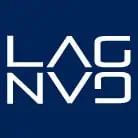Section 165 of TCGA 1992 refers to a provision of the tax legislation that allows individuals
or trustees to defer the payment of capital gains tax when gifting certain assets to another
person.
The relief granted by section 165 is called Holdover Relief.
The relief is specifically designed to facilitate the transfer of assets without imposing an
immediate tax liability, enabling individuals or businesses to effectively "hold over" the gain
until a later date.
The key concept behind section 165 holdover relief is that the capital gain arising from the
transfer is effectively rolled over or postponed rather than being immediately taxed.
The transferor does not pay CGT at the time of the transfer, and instead, the recipient also
called the transferee, assumes the transferor's CGT liability for that asset.
Generally speaking, a gift of a chargeable asset is treated as a disposal made by the donor for
CGT purposes.
If the transfer is between connected parties the deemed consideration is equal to the market
value of the asset under s. 18 TCGA 1992.
This is also the case if it is made to a person not connected to the donor and the transfer is not
a bargain at arm’s length (TCGA 1992 s 17(1)(a)).
When an election is made under section 165 the chargeable gain is reduced by the held over
gain and where the base cost of the donee is reduced by the amount of the gain held over.
Conditions
The relief applies on the transfer of an asset where:
(a) it is, or is an interest in, an asset used for the purposes of a trade, profession or vocation
carried on by
(i) the transferor, or
(ii) his personal company , or
(iii) a member of a trading group of which the holding company is his personal
company, or
(b) it consists of shares or securities of a trading company, or of the holding company of a
trading group, where
(i) the shares or securities are not listed on a recognised stock exchange, or
(ii) the trading company or holding company is the transferor's personal company
For these purposes, a personal company is a company in which the transferor owns not less
than 5% of the votes.
A group includes a company and its 51% subsidiaries, while trade, profession and vocation
have the same meaning as in the Income Tax Acts.
A trading company is a company carrying on trading activities that do not include substantial
non-trading activities. This is the same test that applies to Business Asset Disposal relief and
Substantial Shareholdings Exemption.
HMRC has finally departed from the strict test based on the 20% threshold to consider if non-
trading activities are substantial.
The new approach requires identification of the trading and non-trading activities and then
consider how best to measure the non-trading activities to see whether they are substantial in
the context of the company’s activities as a whole.
The benefits of the relief are available to transferors who are either individuals and trustees.
The country of residence of the transferor is a less important requisite as non-UK residents
are generally outside the scope of CGT unless an asset used in a trade carried on in the UK or
it consists of land.
The relief does not apply where the transferee is not resident in the United Kingdom under
the Statutory Residence Test or by a double taxation treaty or if he would not be liable in the
United Kingdom to tax on a gain arising on a disposal of the asset occurring immediately
after its acquisition.
An exception to this rule is the transfer of UK land that is subject to section 1A(3) TCGA
1992.
Furthermore, anti-avoidance rules assess the donee on the rolled over gain if after the transfer
he still owns the asset but he becomes non-UK resident within 6 years after the end of the
year of assessment in which the relevant disposal was made and he still holds it.
If the donee is a company, relief will additionally be denied if it is controlled by a non-
resident person (or persons) who are themselves connected to the donor.
In regard to trusts, the relief is usually not available where the trust is settlor-interested or it
could become so with some exceptions for trusts for the benefit of a disabled person and
heritage maintenance funds.
The relief applies to qualifying assets which are:
- Business Assets, this also includes shares and securities in trading companies;
- Land and Buildings used for business purposes, typically qualifying furnished holiday
letting properties or commercial real estate.
The claim
It's important to note that except for settlements into trusts, the claim for the relief requires a
joint election to be made by both the donor and donee.
The time limit for making gift relief claims is four years from the end of the tax year of
disposal.
Section 165 holdover relief can be a useful tool for succession planning, business
reorganizations, and intergenerational transfers.
Before making any transfer of business assets it is important to ensure eligibility and to
understand the specific implications and requirements of the relief in each individual case.


